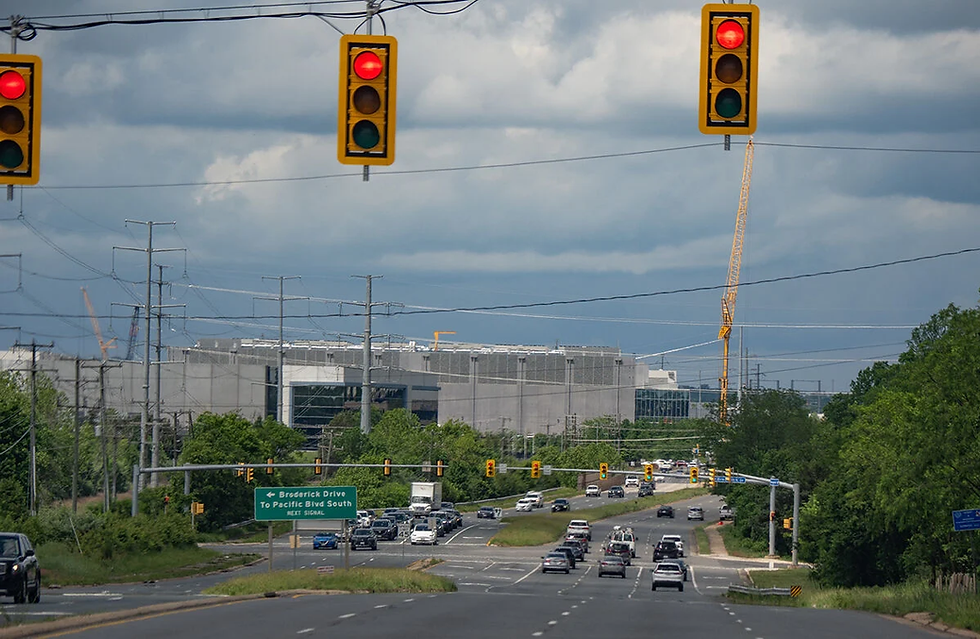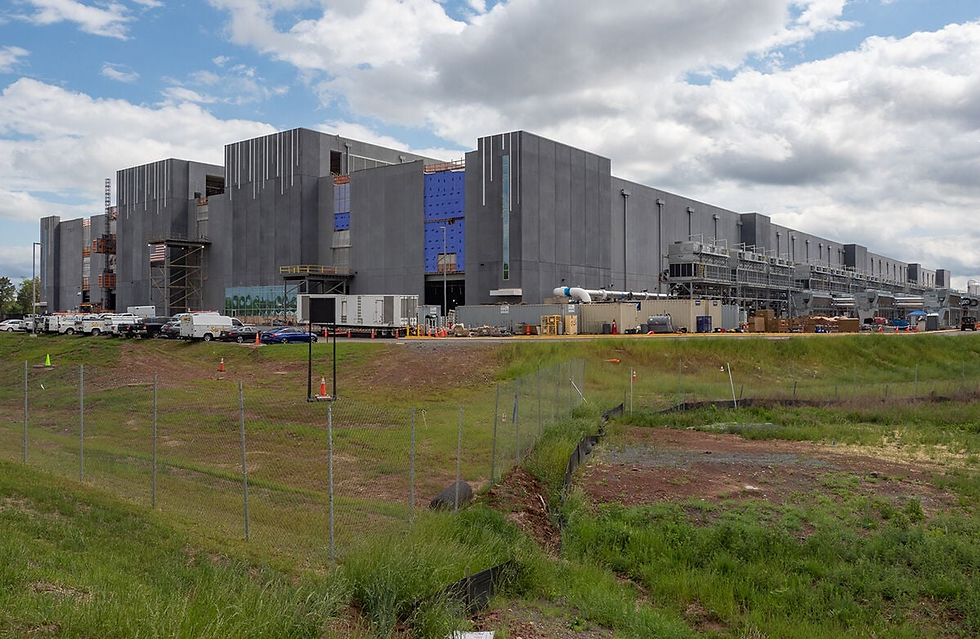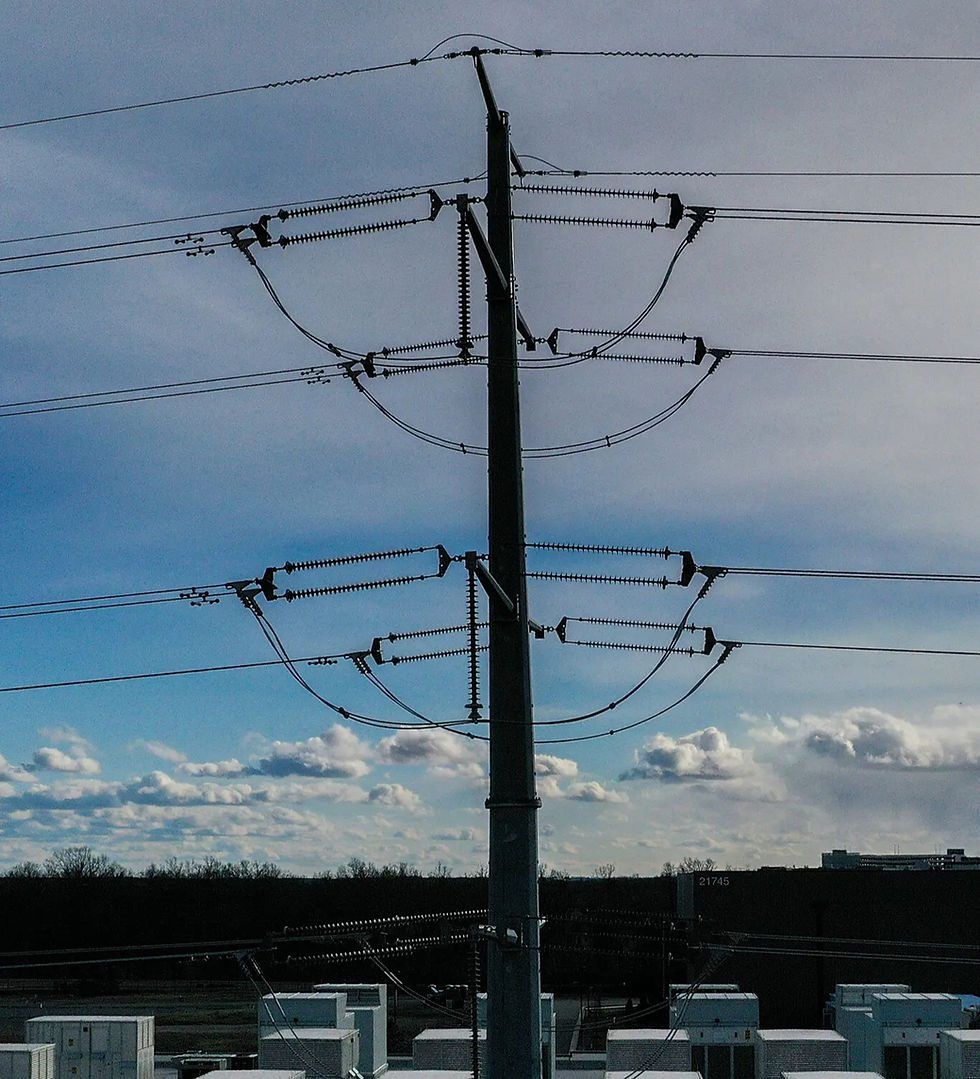As data centers multiply in the Chesapeake region, water use increases too
- Think Big
- Jul 28
- 5 min read

This series explores the impacts of data centers on water supply, energy use, air quality and stormwater runoff in the Chesapeake Bay watershed. Data centers house the computer systems that enable internet activity and, increasingly, artificial intelligence. Northern Virginia, in the middle of the Bay watershed, is the global epicenter of these warehouse-like facilities. Their footprint is now spreading into Maryland and Pennsylvania.
Perhaps you’ve read that ChatGPT, the most prominent artificial intelligence chatbot, consumes about one plastic bottle’s worth of water for every 100-word email it generates. But, as new AI models emerge, the water consumption of the data centers that fuel it multiplies. And the water, of course, doesn’t come from a store-bought bottle.
In Northern Virginia, which is home to the world’s largest concentration of data centers, the water comes from the Potomac River basin — a source that also supplies drinking water to residents before flowing to the Chesapeake Bay. Each new large AI language model that comes along now accounts for substantially more water consumption than its predecessor, and experts are predicting a future in which the water-cooling needs of AI could compete with the region’s other water needs, particularly on hot summer days.
Computer servers running nonstop inside these warehouse-like data centers generate heat. To keep them cool and running efficiently, most data centers use evaporative cooling systems. The systems use water to transport the heat out of the buildings into cooling towers. One researcher compared the process to the way sweat is emitted to help cool the human body.
While evaporative systems are the most common, air cooling (essentially air conditioning) is an option that uses less water but more electricity. Synthetic liquid cooling is also used at some specialized data centers. And, in Loudoun County, VA, some data centers use reclaimed water for cooling purposes.

The growth of data center construction in Virginia alone nearly doubled the demand for electricity from the region’s grid in the second half of 2024, but water consumption is harder to measure. Researchers are only beginning to understand the water use associated with data center growth. Part of the problem is that very few of the facilities publicly report water use. And some of the water in question is reused or even returned to its source — though large amounts evaporate during the cooling process.
“Water demand and power demand have a linear growth right now, because [water] is the cheapest way to cool,” said Lauren Bridges, an assistant professor of media studies at the University of Virginia who studies the environmental impacts of data infrastructure.
Generally, the more energy intensive a data center is, the more heat its computers produce — and the more cooling water it consumes. That’s especially true in places where water is still an affordable and seemingly abundant resource, such as the Potomac River basin in Northern Virginia.
A widely cited study by Bluefield Research found that, in 2023, the vast majority of data centers in the world were using water as their primary form of cooling. Almost all of it was coming from local watersheds. Google’s own sustainability report noted that the company’s self-owned data centers alone withdrew nearly 8 billion gallons of water and consumed more than 6 billion gallons of freshwater for on-site cooling in 2023. Almost 80% of that water was drinkable, according to a University of California Riverside report focused on making data centers less “thirsty.”
Google’s water use increased by about 20% per year in each of the recent years, an uptick the Bluefield report found was similar among other companies running data centers as more AI models came online. And the 2024 U.S. data center energy report from the Lawrence Berkeley National Laboratory projects that the 2023 water use numbers could double or even quadruple by 2028. The report said they could reach up to 74 billion gallons per year used by the sector if current trends continue, “further stressing the water infrastructures.”
Globally, the UC Riverside report found, the water demands of AI are projected to consume as much water as half of the United Kingdom by 2027.
“This is concerning, as freshwater scarcity has become one of the most pressing challenges,” the report stated.

These global issues are coming home to roost in regions where hundreds of data centers are located in one watershed. In Arizona, the second-largest concentration of data centers in the U.S. is already straining the Phoenix area’s limited water supply. A similar story is playing out in parts of Texas, where affordable energy is thought to be more plentiful than the water that the data centers demand.
Between water availability and access to affordable power, Northern Virginia remains both the largest and fastest-growing data center market in the world. The total square footage of those facilities was five times greater in 2023 than it was in 2015, according to the Northern Virginia Technology Council. An industry-run data center map of the region showed it had about 370 data centers either in operation or under construction by mid-2025.
The vast majority of those data centers are concentrated in the Potomac River basin, where water supplies have been sufficient so far but are still subject to droughts and other stressors. Forecasters say that data centers will be one of those stressors in the near future.
Because the water use of individual centers is typically not made public, Alimatou Seck, a senior water resources scientist at the Interstate Commission on the Potomac River Basin, worked with water suppliers to calculate average and cumulative. She presented her recent calculations at a workshop in May.

Seck found that data centers in the region currently consume about 2% of the water used from the Potomac River basin. That number shoots up to 8% during the summer. If the industry continues to grow at an unconstrained pace using standard cooling technologies, she projected that the amount could surpass 33% by 2050, requiring 200 million gallons of Potomac water per day. For context, the District of Columbia metropolitan area currently uses a maximum of about 600 million gallons per day from the Potomac at the peak of water use in August.
“We don’t know what will happen with energy or regulatory pressure, but it’s an issue we will have to follow closely in the future,” said Seck, whose initial findings are still under review and being circulated among stakeholders for feedback.
She pointed out that the numbers do not include water use for power-generating plants, which can be an additional large category of growth related to the industry. Data center companies are increasingly looking to nuclear energy as a cleaner source of energy that can also fuel the industry’s rapid growth. But nuclear power plants, like data centers, also need to be kept cool. To do that, they use large quantities of water.




Kommentarer